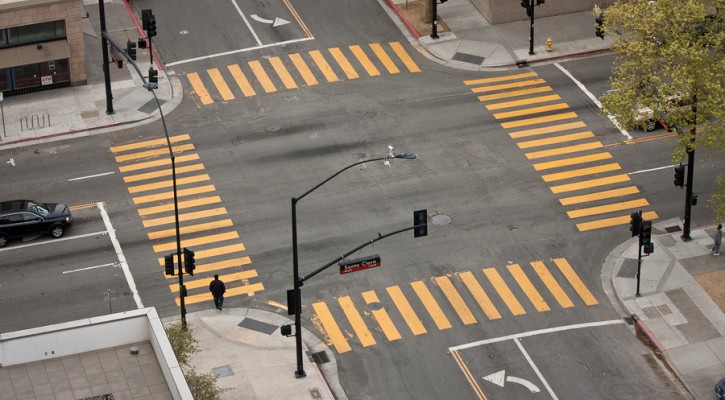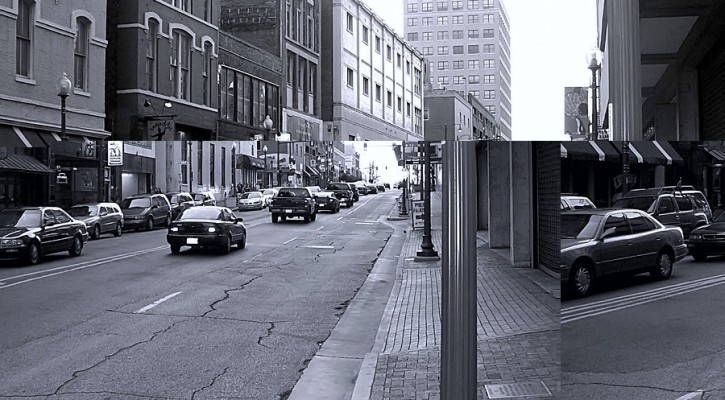
Winter Safety Tip #1: Trip Planning
December 4, 2014
Stay Safe by Planning Your Trip
Trip planning is the key to safe and stress free winter truck driving. Don’t wait until the winter months to start planning for winter. What does this mean? It means that when the weather is good, take notes on where the chain up and chain off places are. Build a library of safe places to park so you have alternatives when your planned stop does not pan out. How many of us have had the experience of aiming for that rest area only to find that it is closed? That is all fine in fair weather but when the blizzard hits we better have a plan B to get to our next safe place.
A big part of trip planning in the winter is monitoring the weather. There are many sources for weather: the XM radio, the Weather Channel (usually on at the truck stops), the Internet (from our smartphone or Wi-Fi), 511 from the not-so-smart phones, and our old friend – the robotic voice of NOAA weather. Lastly, there is the old school method of predicting the weather – using the CB to get information about what the conditions are ahead.
Take out your map, your library of safe places to park, and the weather information you gathered and plan your trip. Plan it so that you are going over the passes when the snow has melted (or at least after the plows have had a chance to work the road a bit). In bad weather, calculate your speed at 25mph. If you overestimate your speed you may run out of your driving hours or hit your 14 before you can get to a safe place. Remember that the “extra two hours of driving for unforeseen traffic or weather” only applies if it is unforeseen – you cannot tell DOT that you did not see the winter storm coming when it has been broadcast by every news report and DOT traffic sign.

Blame Evolution for Texting While Driving
November 7, 2014
Everyone admits we have a problem with texting while driving. Lawmakers admit it, passing no-texting legislation across the nation. Parents and teenagers alike admit to texting while driving, despite all its dangers. Even cell phone companies admit it. Cell phone companies.
So why do we continue to do it? Even those of us that know it’s dangerous will instinctively check our phone at the slightest buzz. Even those of us that live in cities that have banned texting while driving can’t resist the ping of a new message. Is it an addiction? Paul Watters, head of motoring policy for the AA [a motoring organization in the U.K.], seems to think so:
“What we find in our research is that there’s an addiction here, to texting and using smartphones, it’s an addiction that is very hard to break even when in the car.”
However, texting while driving may be more than just an addiction. In fact, it could be the result of billions of years of evolution.
Think about it. You’re walking through the woods at the dawn of man. Suddenly, you hear a stick break behind you. Is it a saber-tooth tiger? Is it a deer? Or could it be another human… possibly a fertile mate with a high-class hut and dinner on the campfire? If you don’t look, then you’ll never know. Your evolutionary ancestors were able to eat, reproduce and survive because they looked when they heard a stick crack in the woods.
Today, the sound of a text message is our stick cracking in the woods. What could that sound be? A party? A date? A job opportunity? Mom telling you that dinner is ready? The biological urges that drove us to turn our heads in the woods billions of years ago are the same urges that drive us into distracting driving in 2014.
So where does that leave us? If the cause of texting while driving is an unconcious, biological result of billions of years of evolutionary influence, then what can we do about it? The solution is simple: Evolve.
In a world where everyone is constantly connected by their cell phones, modern man has to evolve into a species that doesn’t turn its head willy-nilly. A stick breaking in the woods or a cell phone beeping with a text are meaningless when your survival depends on driving a vehicle at 55 mph.

So Long Daylight, Hello Headlights.
November 4, 2014
Now that Halloween has come and gone, and Day Light Savings Time has rolled around, it’s time to say goodbye to long-lasting daylight hours. With a 5 o’ clock sunset, many drivers will still be on the road long after the sun goes down. That makes this week the perfect time to brush up on laws regarding headlights.
When it comes to headlights, there is little variation from state to state. That makes it easier for drivers across the nation to learn and follow local headlight laws. Here are a few laws to remember:
- Vehicle must have two functioning headlights
- Headlights must be turned on when it becomes dark outside
- Headlights must be turned on when visibility is low (such as in stormy or foggy weather)
- High beam headlights can be used to improve driving visibility, but must be turned off for oncoming traffic
- High beam headlights shouldn’t be used when following another car
- Some states require headlights to be turned on 30 minutes after sunset until 30 minutes before sunrise
To learn your state’s local headlight laws, review the state vehicle code or check your state’s driver handbook. Stay up-to-date on the laws of the road, and you’ll have a safe, ticket-free drive this season.

Scary Costumes. Safe Drivers.
October 30, 2014
Halloween is scary for many reasons. There are ghouls, ghosts and goblins running amok. There are haunted houses and frightening decorations. There is madness and mayhem. There is witchcraft. There are clowns.
However, one thing that shouldn’t be scary this Halloween is your driving. Of all the days to practice safe driving, Halloween may be the most important. The streets will be filled with kids trick or treating in the evening, followed by parades of party-goers enjoying a costumed night of wicked revelry.
Let your friends and neighbors enjoy the Halloween festivities by practicing safe driving this weekend. The more safe drivers on the road, and the fewer dangerous and/or intoxicated drivers, the more fun everyone will have.
Here are some tips for safe drivers to follow this Halloween:
- Drive slow. Kids will be spontaneously jetting out into the street all over town.
- Watch for children running out into the road from between parked cars.
- Expect pedestrians on the road, in the medians and on the curbs and sidewalks.
- Enter and exit driveways with extreme caution.
- Keep an eye out for the dark clothing that makes up most Halloween costumes, especially after the sun goes down.
- Avoid all distractions – especially cell phone use.
- Don’t get too distracted by outlandish costumes and decorations. If it’s that interesting, pull over to marvel.
Now put on your freaky costumes, #drivesafe and have fun!

Dangers of the Intersection
October 15, 2014
It turns out, the most dangerous place to drive is closer to home than you might think. Rather than winding cliff-faced roads or high-speed highways, more collisions and deaths occur each year at this little-known, under-appreciated location: the common intersection.
In fact, more than 2 million collisions will occur at intersections this year. That’s close to 40% of all traffic accidents in the U.S., which is a substantial slice of the car crash pie.
The Deadliest Place in Town?
Intersections are a deadly place to be. More than 6,500 people die in intersection collisions annually, killing drivers, passengers, cyclists and pedestrians all across the country. Whether it’s an urban stoplight or a 4-way stop in the suburbs, the intersection is no place to let your guard down. Every single intersection can be considered the deadliest place in town.
Why? Why are intersections such a hazard? The National Safety Council attributes the majority of collisions to the following circumstances:
- Failing to scan intersections properly on approach
- Following other vehicles too closely
- Signaling improperly
- Misjudging the speed and distance of other vehicles
- Turning improperly
- Driving aggressively, including speeding and running red lights
What You Can Do
Although many drivers will fail to practice safe driving as they pass through intersections, those that read this drivers blog will be able to affect some change.
First of all, you can drive in an attentive, defensive mode. In other words, drive as if everyone else is out to get you! Expect other drivers to speed up through yellow lights, run red lights, tailgate, switch lanes erratically, etc. Stay alert and don’t get caught off guard.
You can also teach your friends and family to do the same. By driving smart, you are already being a good influence. You are teaching by doing. You can also point out the dangers of those who speed, tailgate, fail to signal and make other common mistakes. Or, discuss what to watch out for and the best way to deal with each situation.
It’s a dangerous world out there, especially for new drivers. So stay alert and drive safe no matter where you are, and take extra caution when approaching an intersection.

Pre-Trip Inspection Basics
October 13, 2014
Before heading out on the highway, it’s good to know what’s going on under the hood… of any vehicle. If you’re driving a commercial vehicle, then it’s even more important. That’s why most states require drivers to a pass pre-trip inspection test before they can obtain their commercial drivers license (CDL).
Knowing how to conduct your own pre-trip inspection will ensure a safer, quicker drive on any job. That means less time spent broke-down on the side of the road (or worse), and more time behind the wheel making money.
What is a Pre-Trip Inspection Test?
A pre-trip inspection test provides the state with evidence that you can ensure your vehicle is safe to drive. It also provides you with confidence and peace of mind knowing that your truck is in good shape before hitting the road.
In the test, you will demonstrate your knowledge by walking around the vehicle, checking all the safety components and explaining each part that is checked to the test administrator. You should touch each part of the vehicle as you explain to show the administrator exactly what you are referring to.
Let’s Cover the Basics
In the exam, you must demonstrate a thorough knowledge of your vehicle. These are most of the basics you will be expected to check:
- Overall safety of the vehicle
- All major vehicle hoses – the hoses themselves, plus a quick check for puddles or dripping fluids underneath the vehicle that could indicate a leak
- All major fluid levels, such as oil, power steering fluid, etc.
- All major vehicle belts, including the power steering belt, water pump belt, alternator belt, and air compressor belt – ensure belts are snug and don’t have any cracks, frays or damage
- Clutch or gearshift
- Ensure the oil pressure gauge functions properly
- Confirm that all mirrors and windshields are clean, undamaged, and unobstructed
- For non-power steering vehicles, ensure the steering play is within the normal range.
- Double check that emergency equipment is on board – this includes spare electrical fuses, at least three reflective triangles, and a properly charged and rated fire extinguisher at all times
The list of safety checks can be quite extensive, but it’s essential that you commit all these basics to memory. That way you will ace your exam, keep your vehicle in good working condition and be able to prevent problems down the road.

Fall Driving With Murphy’s Law
October 7, 2014
Anything that can go wrong will go wrong. – Murphy’s Law
The universe can be especially cruel in the fall driving season. Hot and cold air mix to create high wind, heavy rain and other unpredictable weather patterns. Well-worn vehicles that muscled through summer travels start to show wear and tear. Traffic patterns change through school sports seasons, harvest times and holidays. And, in the middle of it all, something is bound to wrong.
Be prepared to face Murphy’s Law this fall season by following these smart driver tips:
Tune Up
The long summer season can be rough on any vehicle, so now is the perfect time to tune it up. Get a an oil change and ask your trusted mechanic to make sure everything is in good order. Or, if you’re a penny-pinching do-it-yourselfer, then be sure to check your fluids, brakes, tires, and lights.
Don’t fall victim to a roadside breakdown by neglecting your vehicle’s essential needs. Since every ride is different, it’s best to consult the owner’s manual to stay up to date on scheduled maintenance.
And, if you’ve been ignoring your check engine light for a while, then now might be a good time for a diagnostic test.
Prepare for Rain and Fog
Expect to face the rain this fall season. El Nino is kicking in, and the showers are bound to hit you no matter what region you live in. So be prepared for slick roads, slower traffic, low visibility and possibly dangerous conditions. Watch out for inexperienced or careless drivers, and set a good example by following our tips for driving during this especially wet season:
Don’t let the fog catch you off guard, either. Keep your windshield and headlights clean to improve visibility, and drive carefully.
Mind the Leaves
Autumn leaves are known for their beauty, but they’ve also been known to be a menace on the road. As the leaves change colors and fall to the ground, they obscure traffic lines, cover potholes and hide other road hazards. They also get slick quick when rain and morning dew wet the asphalt.
With falling leaves come seasonal leaf-peepers. Sightseers drive across the country to marvel at scenic autumn drives. This can lead to slow, distracted drivers navigating unfamiliar territory, so be prepared to deal with these out-of-towners.
Take Your Time
The best way to prepare for the worst is to give yourself plenty of time to deal with anything that comes your way. A traffic jam, detour, road hazard or other delay is no big deal if you leave the house early. Give yourself plenty of time for any excursion.
What Are Roads Worth to You?
October 2, 2014
This infographic illustrates why it’s important to invest in our nation’s roadways. When our taxes go to building and maintaining roads, the money comes back around in car maintenance savings. Plus, if your time is worth money then decreased traffic could increase income!

A Love for Antique Trucks
September 30, 2014
Expand your appreciation of the history of trucking with this slideshow of antique trucks over at Overdrive. These photos include trucks from as early as the 1920’s, showcasing many eye-catching beauties:
Antique Truck Historical Society
The ATHS show took place last weekend, and featured over 300 vehicles proudly displayed at the Saratoga County Fairgrounds near Albany, New York. Antique trucks were the stars of the show, but this event also included classic cars, vintage tractors and antique construction equipment. See the full story here

How to Make Your Vehicle Last Forever
September 25, 2014
Make your new investment count by learning the tips & tricks it takes to help your vehicle last forever.
Take Pride In Your Ride
A little bit of pride can go a long way. Just an ounce of pride keeps your vehicle’s health in the front of your mind. It encourages you to clean it, maintain it, and take care of any issues that may come up. Having pride in your ride means that you care about making it last, rather than carelessly driving it around until you find a newer model.
Know Your Mechanic
The relationship you have with your mechanic can have a dramatic effect on the lifespan of your vehicle. Find someone that you can trust with your beloved ride – not only trust to keep costs low, but also trust to make repairs the right way. You don’t want shortsighted, quick fixes that will only cause trouble farther down the road.
Schedule Maintenance
All vehicles come with a manual that can be found in the glove box. Inside the manual, you will find a maintenance schedule. Integrate this maintenance schedule with your calendar. Whether you have an old fashioned pocket calendar or use the latest phone app, it’s important that car maintenance be scheduled right alongside birthdays and doctor’s appointments.
Keeping up with your oil changes, fuel filter changes and air filter changes can make that engine run forever, because your vehicle needs clean air, clean fuel and uncontaminated oil to prevent wear and tear.
Regular maintenance also gives you a chance to chat with your mechanic, as well as spot any issues that could potentially cause serious problems down the road.
Don’t Ignore Warning Lights
Many people drive for years with the old check engine light on. While we recommend taking the vehicle to the mechanic when this light shows up, it’s not always necessary.
However, it is NEVER, EVER o.k. to ignore these three crucial lights: the engine oil light, the engine temperature gauge and the brake light. Just a few minutes with the oil light on, and you may suddenly find yourself broke down on the side of the road – and in the market for a new ride. A few minutes with the temperature gauge in the red zone, and you’re sure to see smoke start bellowing out from under the hood. A few minutes with the brake light on, and you may suddenly realize that there is no slowing down as you approach the next stop light.
Watch Your Weight
Extra weight can be an engine killer in the long run. Any added stress causes premature wear and tear, and that includes both weight inside the car and drag outside the car (such as bike racks or cargo carriers).
Don’t let weight worries keep you from having a little fun every once in a while, though. It’s fine to hook up the bike rack, tow the boat (assuming you have the proper vehicle for it), and haul a few hundred pounds of friends and family out to the lake for the weekend. However, having these demands on your vehicle during a daily commute will slowly wear out critical systems in your ride – such as the tires, suspension, exhaust, engine, transmission, etc.
Drive Easy
Easy driving means treating the gas and brake pedals like an egg: press too hard and they may break. Gently accelerate and decelerate. Keep a safe distance behind other cars on the road and anticipate when you will have to slow down or stop.
Driving easy will cause less stress on your ride, which will also result in less fuel and oil consumption. That can save you money in the short run as well as farther down the road.
In the end, it all boils down to common sense. Take care of your vehicle and drive safely, and it will last forever. We hope that these tips will lead to a long and happy life for both you and your ride.
